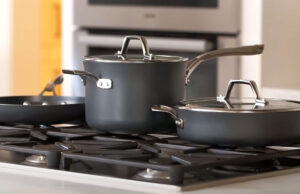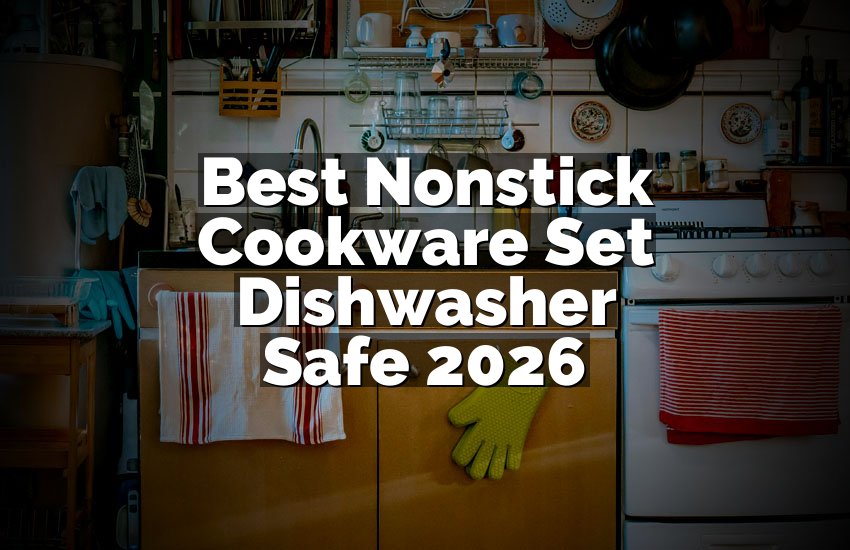As an Amazon Associate, I earn from qualifying purchases at no extra cost to you.
Beko Dishwasher Error Code E01: Easy Way to Fix It Fast
If your Beko dishwasher suddenly flashes the E01 error code, don’t panic. It usually means a water supply or connection problem, and most of the time, you can fix it yourself. In this article, we will walk through quick and simple methods to solve this problem. You’ll learn what causes it, how to check every part, and how to prevent it in the future. Let’s get your dishwasher working smoothly again!
Steps to Solve Beko Dishwasher Error Code E01 Quickly
Check the Water Supply Connection
The first thing to do is check the water supply. Sometimes, the E01 code appears because water isn’t reaching the dishwasher properly. Look at the tap and hose to make sure the water is on and flowing. If the tap is off or the hose is bent, the dishwasher cannot fill with water. Also, check the hose for any leaks or cracks that might stop water from entering.
Next, inspect the connection points carefully. Make sure the hose is tightly connected to both the dishwasher and the tap. Loose connections can trigger the E01 code immediately. Even small kinks in the hose can reduce water flow, causing errors. Remember, water pressure needs to be strong enough for the dishwasher to work correctly.
Sometimes, debris can block the water inlet. Remove the hose and look inside for dirt or small particles. Clean it gently with a brush or rinse it under running water. After checking everything, reconnect the hose securely and turn on the tap.
Finally, test the dishwasher by starting a cycle. If water flows normally, the E01 code should disappear. If not, you may need to check the internal filters and valves for further issues.
- Ensure the water tap is on
- Check the hose for bends, leaks, or cracks
- Tighten all connections securely
- Clean debris from the hose
- Test the dishwasher cycle
Inspect the Inlet Valve
The inlet valve controls water entry into the dishwasher. If it is faulty, the machine can’t fill with water and shows E01. Start by turning off the water and unplugging the dishwasher. Remove the valve carefully to examine it. Look for any signs of damage or clogging.
A blocked valve often prevents proper water flow. Clean it using a soft brush and water. Avoid using sharp objects as they can damage the valve. Also, check the electrical connections to make sure they are secure. Loose wires can stop the valve from opening correctly.
If cleaning doesn’t solve the problem, the valve may need replacement. Replacing a valve is usually simple and can save you from costly repairs. Always buy a compatible Beko part to ensure proper functioning.
After reinstalling or replacing the valve, reconnect the water supply. Turn on the dishwasher to see if the error disappears. Regularly checking the inlet valve can prevent future E01 issues.
- Turn off water and unplug the dishwasher
- Remove and inspect the inlet valve
- Clean any debris carefully
- Check electrical connections
- Replace the valve if necessary
Clear the Filters
Dirty or clogged filters can also trigger E01. Start by removing the bottom rack and accessing the filters. Take out the mesh and coarse filters carefully. Rinse them under running water to remove food particles and debris. Use a soft brush for stubborn dirt.
Cleaning filters regularly improves water flow and prevents errors. Make sure you also check the area around the filter housing. Sometimes debris can settle inside and block water circulation. A quick rinse can solve the problem instantly.
After cleaning, reinstall the filters properly. Incorrect placement may stop the dishwasher from working. Once everything is secure, run a test cycle. A clear filter allows water to flow freely, which usually clears the E01 code.
- Remove bottom rack to access filters
- Take out mesh and coarse filters
- Rinse and brush to remove debris
- Check filter housing area
- Reinstall correctly and test the dishwasher
Examine the Float and Float Switch
The float in your dishwasher measures water level. If it is stuck or the float switch is faulty, it can trigger the E01 code. Open the dishwasher and locate the float. It is usually a small plastic dome or cylinder at the bottom.
Try moving the float gently up and down. If it’s stuck, clean around it to remove debris. Dirt or soap residue can prevent it from moving freely. Also, check the float switch under the float. Make sure it clicks when you move the float.
If the switch does not respond, it may need replacement. Testing with a multimeter can confirm if it’s working. A functioning float and switch ensure the dishwasher fills with the right amount of water, preventing E01 errors.
- Locate the float inside the dishwasher
- Move it gently to check freedom of movement
- Clean around the float
- Check the float switch for proper clicking
- Replace switch if not working
Test the Water Pressure
Low water pressure can cause E01 errors. Start by checking other taps in your house to see if water pressure is weak. If all taps are weak, the problem is with your home water supply. Consider adjusting the main valve or contacting a plumber.
If pressure is normal elsewhere, inspect the dishwasher hose for internal blockage. Sometimes mineral buildup can reduce flow. Cleaning or replacing the hose can restore proper pressure. You can also check the inlet valve screen for tiny debris that may affect pressure.
Proper water pressure ensures the dishwasher fills quickly and evenly. Too low pressure prevents the system from working, while too high pressure can cause leaks. Balancing pressure is essential for smooth operation and avoiding E01 errors.
- Check water pressure at home
- Inspect hose for blockages
- Clean inlet valve screen
- Ensure pressure is balanced
- Test dishwasher to confirm
Reset the Dishwasher
Sometimes, simply resetting the dishwasher can remove the E01 code. Turn off the appliance and unplug it for about 10–15 minutes. This allows the system to reset and clear minor errors. Plug it back in and turn on the power.
After resetting, run a short cycle to see if the code disappears. Many small glitches are cleared this way without further repair. However, if the E01 code comes back, it indicates an underlying problem, and you should revisit the previous checks carefully.
Resetting is also useful after performing maintenance. It ensures all new parts or cleaned components are recognized by the dishwasher. Doing this regularly can prevent unnecessary error codes.
- Turn off and unplug dishwasher
- Wait 10–15 minutes
- Plug in and turn on power
- Run a short cycle
- Repeat if necessary
Final Thoughts
Fixing Beko dishwasher error code E01 is easier than it seems. Most causes relate to water flow, clogged filters, or simple electrical issues. By checking connections, valves, filters, floats, and pressure, you can save money and stress. Remember, regular cleaning and maintenance prevent future errors. Following these tips helps your dishwasher run smoothly and efficiently every day.
| Area | What to Check | Action Needed | Notes |
|---|---|---|---|
| Water Supply | Hose, tap, leaks | Tighten, clean, straighten | Ensure strong flow |
| Inlet Valve | Valve and wires | Clean or replace | Use compatible parts |
| Filters | Mesh, coarse, housing | Rinse, brush, reinstall | Avoid debris buildup |
| Float | Float movement | Clean or replace | Must move freely |
| Float Switch | Electrical switch | Test and replace if needed | Should click when float moves |
| Water Pressure | Home supply, hose | Adjust, clean, replace | Balanced flow required |
| Reset | Dishwasher system | Unplug and restart | Clears minor errors |
Do Beko Dishwashers Often Show E01?
Yes, Beko dishwashers can show E01 more often than expected. This is usually caused by water supply problems or minor blockages. Many people experience this during the first few months of use. In this article, you will understand that simple cleaning and checks often solve the issue. Dishwashers are sensitive to water flow, and any slight obstruction triggers an error code quickly.
It is important to monitor hoses, filters, and valves regularly. Doing this prevents repeated errors and extends the life of your appliance. E01 is frustrating but usually harmless if fixed promptly.
Some users ignore the error, which leads to more serious problems later. Taking a few minutes to inspect your dishwasher saves time, money, and frustration. Always follow safety steps like turning off the water and unplugging the machine before checking anything.
- E01 is common and usually fixable
- Often caused by water flow issues
- Regular checks prevent future errors
- Ignoring can lead to bigger problems
- Quick action saves money
Can Clogged Filters Cause E01?
Yes, clogged filters are a common reason for E01 errors. Filters prevent food and debris from entering the dishwasher pump. Over time, dirt builds up and blocks water flow. This prevents the dishwasher from filling correctly and triggers the error code.
Cleaning filters regularly is essential. Remove the bottom rack, take out filters, and rinse under running water. Use a soft brush to remove stubborn particles. Don’t forget to check filter housing, as debris can settle inside and cause problems.
A clean filter not only prevents E01 but also improves washing performance. It ensures water circulates efficiently, dishes come out cleaner, and the dishwasher lasts longer. Ignoring filter cleaning increases the risk of malfunctions and repairs.
- Clogged filters block water flow
- Regular cleaning prevents E01
- Check both filters and housing
- Improves dishwasher performance
- Reduces risk of breakdowns
Do I Need a Technician for E01?
Not always. Many E01 errors can be fixed at home with basic tools. Checking water supply, hoses, valves, filters, and floats usually resolves the problem. Only consider a technician if all these steps fail.
Technicians are helpful for complex issues, like electrical failures or internal pump problems. However, starting with simple checks saves money and time. Even if you call a technician, understanding these basics helps communicate the problem clearly.
Home fixes are often enough. E01 mostly signals minor water or flow issues. Being cautious and methodical ensures you don’t cause further damage while trying to fix it yourself.
- Many errors can be fixed at home
- Technicians needed for complex issues
- Start with simple checks
- Understand basics before calling professional
- Saves money and avoids unnecessary repairs
Can Low Water Pressure Trigger E01?
Yes, low water pressure is a frequent reason for E01 codes. Dishwashers need a certain level of pressure to fill correctly. If pressure is too low, the system cannot detect water, and the error appears.
Check water pressure in your home and the hose connected to the dishwasher. Sometimes, mineral buildup or blockages reduce flow. Cleaning the hose and valve screen often restores proper pressure. Proper pressure is essential for washing dishes efficiently and preventing repeated E01 codes.
If home water pressure is low, adjust the main supply or contact a plumber. Balanced water pressure ensures smooth operation and avoids repeated errors. Always test the dishwasher after any adjustments to confirm the problem is resolved.
- Low pressure can cause E01
- Check home taps and hose
- Clean valves and screens
- Adjust main water supply if needed
- Test dishwasher after fixing
Do Beko Dishwashers Recover Automatically from E01?
Sometimes, dishwashers may clear E01 after a short period or reset. Minor glitches can reset themselves once water flow resumes. However, relying on this is risky, as the underlying issue may remain.
Resetting the dishwasher manually is more reliable. Unplugging and waiting 10–15 minutes often clears the code. This ensures the system restarts correctly. If the code reappears, you must inspect hoses, filters, valves, and pressure. Preventive care is better than waiting for automatic recovery.
Repeated automatic errors indicate persistent problems. Regular maintenance and checks prevent frustration and improve performance. Monitoring the dishwasher carefully ensures long-lasting, error-free operation.
- Some errors reset automatically
- Manual reset is more reliable
- Persistent issues require inspection
- Regular maintenance prevents errors
- Improves dishwasher life
Frequently Asked Questions (FAQs)
Is it safe to use the dishwasher with E01?
Using a dishwasher while it shows E01 is not safe. The error usually indicates water supply issues. Running it could damage internal parts or cause leaks. Always check the cause first before restarting.
Can I replace the inlet valve myself?
Yes, replacing the inlet valve is possible with basic tools. Turn off the water and power first. Remove the old valve carefully, and install a compatible Beko replacement. Ensure connections are tight to prevent leaks.
Do I need to clean filters after every cycle?
Cleaning filters after every cycle is not necessary, but regular weekly cleaning is recommended. Frequent cleaning prevents E01 errors and keeps your dishwasher efficient. Check the housing for trapped debris as well.
Is it normal for the float to stick?
The float should move freely. If it sticks, it usually indicates dirt or residue buildup. Clean around the float and check the switch for proper operation. Persistent sticking may require replacement.
Can low water pressure permanently damage the dishwasher?
Low water pressure itself may not cause immediate damage but can lead to repeated errors. Over time, the pump and motor may experience strain, reducing lifespan. Fix pressure issues promptly.
Do I need a professional to clean internal valves?
Cleaning minor blockages in valves can be done at home. For internal valves that are hard to reach, a technician is recommended. Proper care prevents unnecessary repairs.
Is E01 more common in new dishwashers?
Yes, new dishwashers may show E01 due to initial water supply or installation issues. Ensuring proper hose connection and cleaning filters before first use prevents errors.
Can resetting the dishwasher fix all errors?
Resetting can clear minor glitches but does not solve underlying issues. Always check water supply, filters, valves, and pressure if the error persists.




